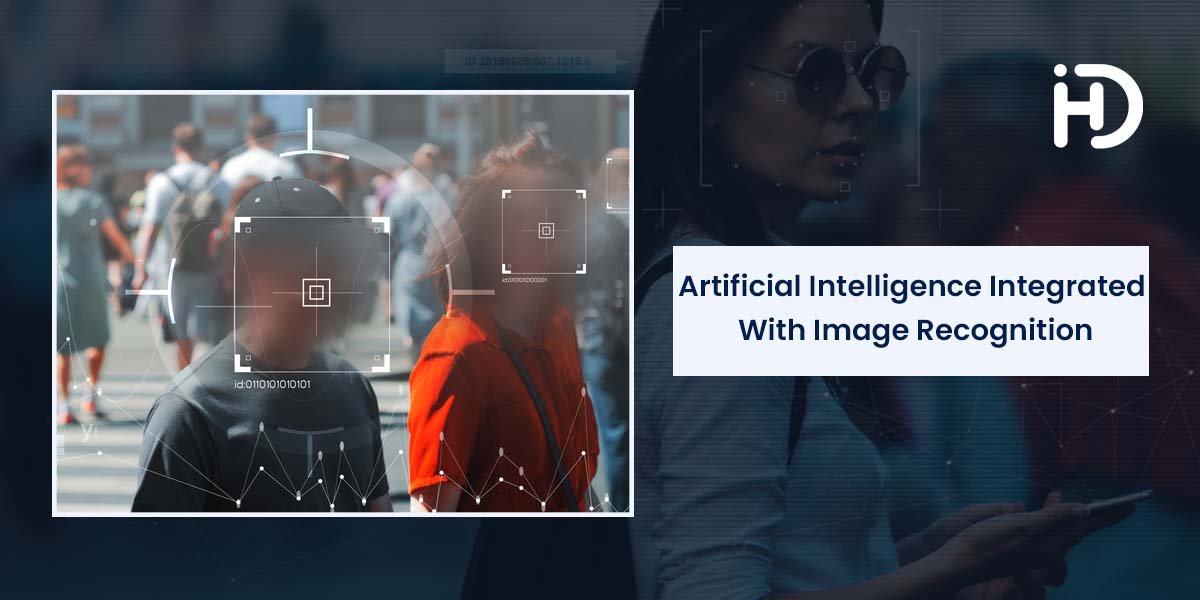In this day-to-day busy life Various vendors and service providers, ranging from small businesses to large corporations, are aware of the expanding demand for sophisticated data processing. By digitizing the many laborious data gathering, processing, and other procedures, businesses have increased production while improving the quality of our daily lives.
Image recognition is one of the best technology that has taken a revolutionary step. Image recognition enables the computer to read and interpret visual data like images and videos.
Image recognition has risen in the past several years from “Is that an orange”? Yes, in previous years image recognition was only able to identify such stuff but nowadays it carries out complex analytical processes in large-scale organizations. This generation has experienced the rates at which image recognition expanded. AI, on the other hand, has made image recognition very much easier for industries and big organizations.
So, let’s get deeper into the topic, and let’s first find out how AI can be useful in image recognition. Without further ado let me start.
What Is AI Image Recognition?
The identification of particular categories, or classes, of objects inside an image or video frame, is a major task in the rapidly expanding subject of computer vision, which is also known as image recognition or image classification. Here is an illustration of an image recognition assignment that identifies people and trees in a landscape photograph.
There are simple image processing methods from which you may carry out image recognition operations, these methods are known as deterministic algorithms. But to point out that these techniques are a little bit restrictive in functionality and scope. Artificial intelligence has positively interfered in the Image Recognition systems and expanded its methodologies of working, making its horizon and process more complex and expandable.
Modern image recognition systems are enabled by
artificial intelligence (AI) and
machine learning (ML) to identify hidden patterns in collections of photos, even those that are invisible to the human eye, and take independent, deft judgments. In order to handle visual data streams automatically on ever-larger scales, AI image recognition has significantly reduced the requirement for machines to receive input from human agents and/or feedback from them.
The Process of Image Recognition
A key use of deep learning is in
AI image recognition systems. AI systems have surpassed us in many areas in their attempt to mimic the logic that underlies human thought, such as by being quicker, more alert, and better able to manage large amounts of data.
The process of image recognition is divided into 3 parts mainly.
-
Training
-
Testing
-
Prediction
It is first identified that what to expect from the input data.
After successfully identifying the input data, it is essential for the system to associate that data with particular images.
It might take two or a few attempts before you get your expected output. But with the help of AI in image recognition surely you will get your expected results.
What Are The Types Of Image Recognition Systems?
Image recognition systems are often trained using one of three methods: supervised, unsupervised, or self-supervised learning.
Here’s a quick overview of all of the three.
For example, if you want the image classification system to identify motor vehicle images, you can use two labels: CAR and NOT CAR. It is supervised learning if you explicitly label both sorts of images in the input data beforehand.
For an unsupervised model, simply feed the image recognition model with a set of photographs without specifying what the images include, and the system will have to figure out the meaningful similarities or differences between the images on its own by analyzing their characteristics or features.
Self-supervised training also uses unlabeled data, which is why it is frequently seen as a subset of unsupervised learning. It is a learning problem in which pseudo-labels generated from the data are used to learn. It enables you to learn to represent data using lower-quality data. This can be used as a foundation for numerous activities, such as teaching the machine to replicate human faces using self-supervision. After you've finished training the algorithm, you may feed it additional data to have it generate entirely new faces.
Applications of Image Recognition systems
Because of the extensive usage of picture recognition, we have progressed much beyond the simple instances we have described thus far. Many industries, including security, healthcare, education, fintech, manufacturing, telecom, utility, and defense, are quickly adopting image recognition systems to improve the speed, accuracy, and efficiency of their visual data processing and analysis capabilities.
-
Object Detection
-
OCR
-
Face Recognition
-
Fraud Detection
-
Visual Search
Conclusion: How Image Recognition can be a game changer
An automated system significantly reduces the number of work hours required for operations such as identification validation or signature authentication. By assigning repetitive, monotonous jobs to machines, your team can work marginally smarter rather than harder. As a result, you may devote your time and resources to more creative business responsibilities.
Many image recognition systems have been shown to be far superior, faster, and more accurate than their human counterparts. Image recognition systems can produce quick results, allowing you to get more done in less time while simultaneously lowering personnel expenses and other overheads.
Also Read
Harnil Oza is a CEO of HData Systems - Data Science Company & Hyperlink InfoSystem a top mobile app development company in Canada, USA, UK, and India having a team of best app developers who deliver best mobile solutions mainly on Android and iOS platform and also listed as one of the top app development companies by leading research platform.
